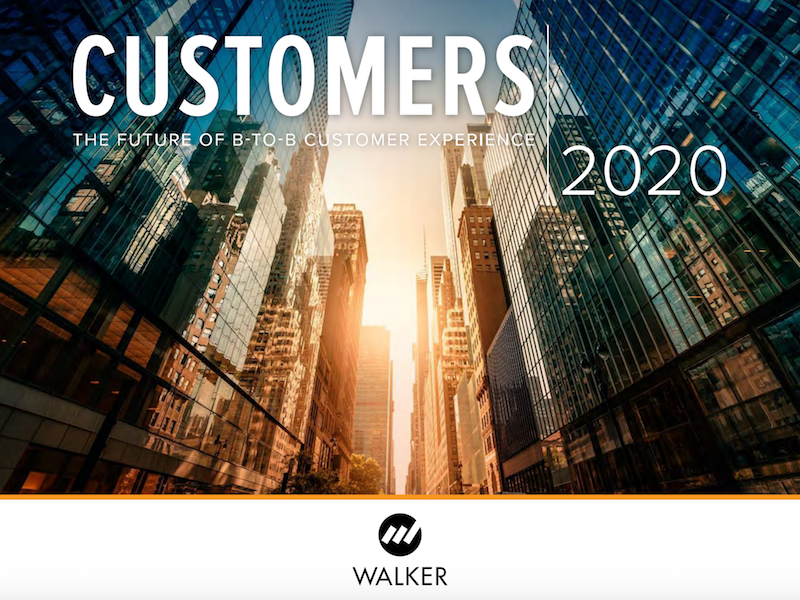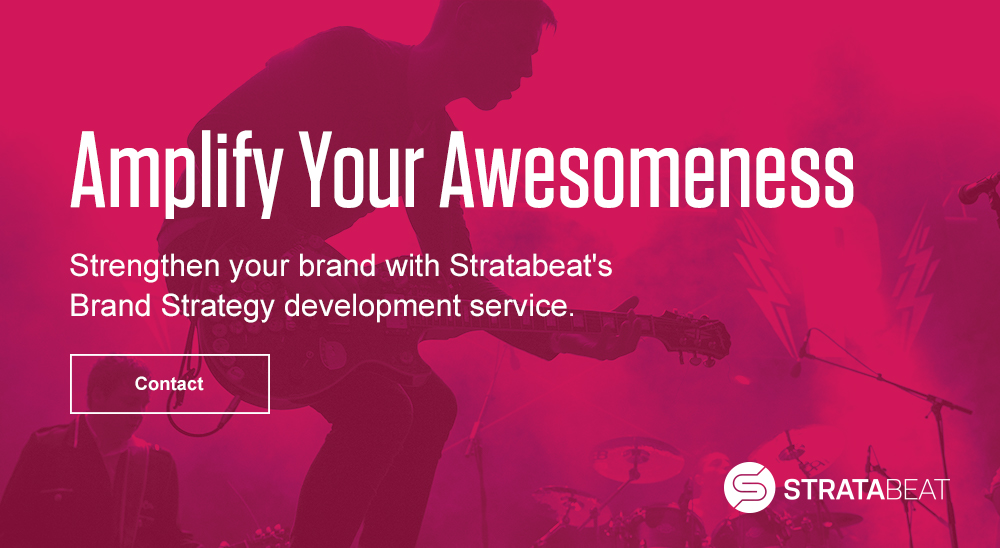Hot Branding Trends of 2017

Brand strategy and branding are powerful forces. They empower businesses to articulate a unique identity, personality, and values. They help consumers and corporate buyers understand differentiation to better enable them to achieve their objectives.
Branding has long been a heavy-duty tool in business-building. However, a wave of change is upon us in the branding world. This is actually a good thing, as we see more customer control, authenticity, and caring all around us. This will lead to not only more brands being more empathetic and mindful, but also more consumers and business buyers being more satisfied and feeling stronger bonds with the brands they buy.
Certain brands are able to achieve cult-like status. Even if your customers are not face-painting your logo on their cheeks, though, achieving deep relationships with customers is a highly fulfilling experience for both brand and customer alike. With this in mind, here are some of the hottest branding trends we are seeing in the market heading into 2017:
Design Centricity
Warby Parker, Uber, Medium, Puma, MVMT, Everlane, MailChimp, Google, Apple, and Airbnb. Although the businesses are extremely varied in size, industry, and focus, they all have one thing in common: extreme design centricity. Using design as the foundation upon which to move your business forward is a powerful strategy. John Maeda’s Design In Tech Report 2016 explores the design trends revolutionizing the entrepreneurial and corporate ecosystems. In the report, he points out that nine of the top 25 VC-funded startups in the past year have designer co-founders, up from five the prior year.
Airbnb is now valued at approximately $30 billion. RISD (Rhode Island School of Design) graduates founded the company, but Airbnb’s head of design, Alex Schleifer, is focused on expanding its design culture so that everyone working at Airbnb is thinking about design and the “user viewpoint”.
The DMI Design Value Index measures the performance of design-centric brands against the S&P 500 Index. From 2004-2014, the 10-year returns of the firms that met the design criteria to be included in the index achieved a remarkable 219% shareholder return over that of the S&P 500. Now that’s a branding trend to bank on!
Greenery
Every year, Pantone chooses a color to represent the cultural climate of the coming year. This time it’s Greenery (15-0343), a “fresh and zesty” yellow-green that calls to mind the first days of Spring. According to Pantone, Greenery signifies beginnings: a fresh New Year; healthier food resolutions and growing vegetarian trends; grass and the outdoors during spring and summer.”
Virtual Experiences
Anyone who has watched TV recently has likely been bombarded with virtual reality product commercials. With Samsung’s and Oculus’s recent product releases as a backdrop, expect to see huge investments in VR as well as a great deal of experimentation on the marketing front in the coming years.
Six Flags Entertainment is planning VR roller coaster rides, which will help save the corporation mountains of money as an alternative to building new, physical-world roller coasters. StubHub, the online ticket marketplace, is testing technology that allows site visitors to test the view of various seat locations before making a purchase. Whether healthcare, real estate, education, or any number of other markets, VR is coming on strong.
It may be a bumpy ride until all the kinks are worked out, but VR in marketing is about to hit the scene, and hit it hard.
Sharing Is Caring
The sharing economy is gaining momentum. We already share cars. We share clothing. There’s even a service to share tools and one to share household items.
Let’s look at cars as a representative example. They sit idle for 95% of the time. It only makes sense that we rethink what automobile ownership really means. The inefficient usage compared to the incredibly high cost is an equation that’s been aching for a solution for decades. Expect more and more efficiencies to be uncovered throughout the economy through more brand options based on a sharing economy.
AI Everywhere
Expect artificial intelligence (AI) to continue to be the focus of the tech world for another year or more. Sundar Pichai, CEO at Google, has publicly stated that all future Google products will incorporate AI. You can already see this represented in RankBrain, which senior research scientist Greg Corrado at Google stated is the third most important signal contributing to the result of a Google search. Bank of America projects the AI industry to grow to $70 billion by the year 2020.
Pichai states, “In the next 10 years, we will shift to a world that is AI-first, a world where computing becomes universally available – be it at home, at work, in the car, or on the go– and interacting with all of these surfaces becomes much more natural and intuitive, and above all, more intelligent.”
Environmental Stewards
With both solar- and wind-powered electricity now much cheaper than coal globally, and with the incoming US government administration apparently on the self-destructive path of global warming denialism, the population will turn to corporations to fill the void of environmental leadership. In fact, clean energy investment is now seeing twice as much global funding as fossil fuels. Google is a good example of the trend, with its plan to reach 100% renewable energy by 2017 across its global operations for both offices and data centers. Bank of America has set a goal to become carbon neutral and purchase 100% renewable electricity by 2020. Look for more brands to embrace environmentalism as a core tenet.
Authenticity
A company cannot come out and say to its audience, “Hey, we’re authentic.” That just sounds so, well…, unauthentic. Instead, companies will be proving their authenticity to customers through action.
According to a Cohn & Wolfe study, top brands perceived as authentic include Disney, Microsoft, Amazon, Apple, Intel, VISA, and LEGO. Many brands have a perceptions gap, though, and will need to work hard at doing the right thing. Looking at the study results, being authentic with customers is a clear benefit to all. According to the study, consumers have signaled their intention to reward those that prove their authenticity, with nearly nine out of 10 consumers “willing to take action to reward a brand for its authenticity.”
Simplicity
Simplicity is a major logo design trend now, as well as a design trend and customer experience trend overall. Expect more and more brands to look towards subtraction rather than addition to add value.
Simplicity in branding has become so significant that it has resulted in the creation of the Global Brand Simplicity Index (by Siegel + Gale) based upon the surveys of approximately 14,000 consumers in nine countries. As the index shows, simplicity goes beyond aesthetics with a direct impact on the bottom line. The top 10 global brands in the Siegel + Gale portfolio have outperformed the major market indexes by 433% since 2009, with a sharp rise since 2015.
In the book Fewer Bigger Bolder – From Mindless Expansion to Focused Growth, authors Sanjay Khosla and Mohanbir Sawhney point to the success of both Spirit Airlines and Emirates Airlines as prime examples of the power of simplicity and focus. Spirit is a deep discounter, while Emirates is in the luxury space. Even though the two airlines could not be more different from one another, they are both singleminded in their approach, resisting the callings for ever more broadening of their services and target audiences, and have each achieved financial success as a result.
Customer Experience
Customer experience is the new black. Forrester has gone all in on customer experience as a research practice. Googling “customer experience” leads to more than 62,000,000,000 results. According to Walker Information’s Customers 2020 report, customer experience will overtake price and product as the key brand differentiator by 2020. What this means is a brand will benefit by not only planning for the ideal experiences it wants its audience to have but also by building the ecosystems to nurture and support a full range of customer experiences.
Customer Control
It used to be that brands spent a great deal of time perfecting their messaging, and told their audience only what they wanted them to hear. That’s laughable today. People are armed with more information and computing power at their fingertips than ever before. Want to know what others think of a brand. Google it on your smartphone and find hundreds of reviews. Check out Facebook and Twitter. The brands that will be successful tomorrow are the ones that are willing to give control of the brand narrative to their customers. As Amazon’s Jeff Bezos says, “Your brand is what other people say about you when you’re not in the room.”

